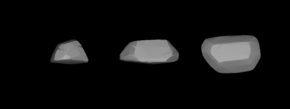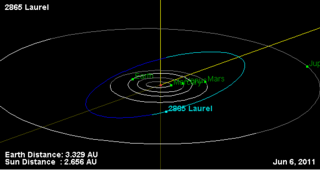
2865 Laurel, provisional designation 1935 OK, is a stony Marian asteroid from the middle region of the asteroid belt, approximately 15 kilometers in diameter. It was discovered by English-born South African astronomer Cyril Jackson at Johannesburg Observatory on 31 July 1935. The asteroid was named after movie comedian Stan Laurel.

Columbia is a stony asteroid from the middle region of the asteroid belt, approximately 26 kilometers in diameter. It was discovered on 22 March 1892, by French astronomer Auguste Charlois at Nice Observatory in southeast France. It is named after Christopher Columbus (1451–1506).
1313 Berna, provisional designation 1933 QG, is a background asteroid and synchronous binary system from the Eunomian region in the central asteroid belt, approximately 14 kilometers in diameter. It was discovered on 24 August 1933, by Belgian astronomer Sylvain Arend at the Uccle Observatory in Belgium. The assumed S-type asteroid has a longer-than average rotation period of 25.5 hours and is likely elongated in shape. It was named for the Swiss capital of Bern. The discovery of an 11-kilometer-sized companion was announced in February 2004.
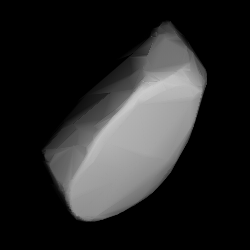
1219 Britta, provisional designation 1932 CJ, is a stony background asteroid from the inner regions of the asteroid belt, approximately 11 kilometers in diameter. It was discovered on 6 February 1932, by German astronomer Max Wolf at the Heidelberg-Königstuhl State Observatory in southern Germany. The likely elongated S-type asteroid has a rotation period of 5.57 hours. Any reference of its name to a person is unknown.
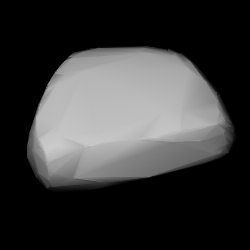
4492 Debussy is a dark and elongated background asteroid and binary system from the intermediate asteroid belt, approximately 15 kilometers in diameter. It was discovered on 17 September 1988, by Belgian astronomer Eric Elst at Haute-Provence Observatory in France. It was later named after French composer Claude Debussy.
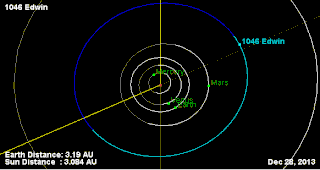
1046 Edwin, provisional designation 1924 UA, is a background asteroid from the outer regions of the asteroid belt, approximately 30 kilometers kilometers in diameter. It was discovered on 1 December 1924, by Belgian–American astronomer George Van Biesbroeck at the Yerkes Observatory in Wisconsin, United States, who named it after his son, Edwin Van Biesbroeck. The potentially metallic asteroid has a short rotation period of 5.29 hours.
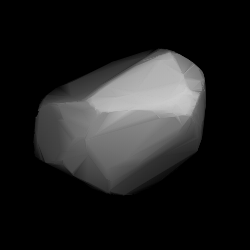
1088 Mitaka is a bright background asteroid from the inner regions of the asteroid belt. It was discovered on 17 November 1927, by Japanese astronomer Okuro Oikawa at the old Tokyo Astronomical Observatory in Japan. The stony S-type asteroid has a notably short rotation period of 3.0 hours and measures approximately 15 kilometers in diameter. It was named after the Japanese village of Mitaka.

1140 Crimea, provisional designation 1929 YC, is a stony asteroid from the middle region of the asteroid belt, approximately 28 kilometers in diameter. It was discovered on 30 December 1929, by Soviet astronomer Grigory Neujmin at Simeiz Observatory on the Crimean peninsula, after which it was named.
2751 Campbell, provisional designation 1962 RP, is a stony Nysian asteroid from the inner regions of the asteroid belt, approximately 6 kilometers in diameter.
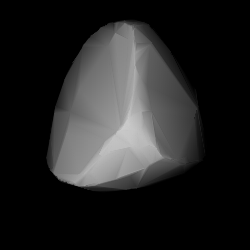
1328 Devota, provisional designation 1925 UA, is a dark background asteroid from the outermost regions of the asteroid belt, approximately 56 kilometers in diameter. It was discovered on 21 October 1925, by Russian–French astronomer Benjamin Jekhowsky at the Algiers Observatory in North Africa. The asteroid was named after Argentine astronomer Fortunato Devoto.
1453 Fennia, provisional designation 1938 ED1, is a stony Hungaria asteroid and synchronous binary system from the innermost regions of the asteroid belt, approximately 7 kilometers in diameter. Discovered by Yrjö Väisälä at the Turku Observatory in 1938, the asteroid was later named after the Nordic country of Finland. The system's minor-planet moon was discovered in 2007. It has a derived diameter of 1.95 kilometers and is orbiting its primary every 23.55 hours.

1251 Hedera is a background asteroid from the central regions of the asteroid belt, approximately 13 kilometers in diameter. It was discovered on 25 January 1933, by German astronomer Karl Reinmuth at the Heidelberg-Königstuhl State Observatory in southwest Germany. The asteroid was named for the climbing plant Hedera, commonly known as "ivy".

1841 Masaryk (prov. designation: 1971 UO1) is a carbonaceous background asteroid from the outer region of the asteroid belt, approximately 46 kilometers in diameter. It was discovered on 26 October 1971, by Czech astronomer Luboš Kohoutek at Bergedorf Observatory in Hamburg, Germany. The asteroid was named after the first President of Czechoslovakia, Tomáš Garrigue Masaryk.
1392 Pierre, provisional designation 1936 FO, is a dark, dynamical Eunomian asteroid from the central regions of the asteroid belt, approximately 26 kilometers (16 mi) in diameter. It was discovered on 16 March 1936, by astronomer Louis Boyer at the Algiers Observatory in Algeria, North Africa. The asteroid was named after the discoverer's nephew, Pierre.
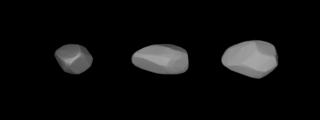
1659 Punkaharju, provisional designation 1940 YL, is a stony Postremian asteroid from the middle region of the asteroid belt, approximately 30 kilometers in diameter. It was discovered on 28 December 1940, by Finnish astronomer Yrjö Väisälä at Turku Observatory in Southwest Finland. It is named for the municipality of Punkaharju.
1297 Quadea, provisional designation 1934 AD, is an Eoan asteroid from the outer regions of the asteroid belt, approximately 23 kilometers in diameter. It was discovered on 7 January 1934, by astronomer Karl Reinmuth at the Heidelberg-Königstuhl State Observatory in Germany. The asteroid was named for the parents-in-law of the discoverer's brother.
7776 Takeishi, provisional designation 1993 BF, is a background asteroid from the inner regions of the asteroid belt, approximately 6 kilometers in diameter. It was discovered on 20 January 1993, by Japanese astronomer Takeshi Urata at the Nihondaira Observatory in Japan. The assumed S-type asteroid has a rotation period of 8.9 hours. It was named after Japanese amateur astronomer Masanori Takeishi.

1336 Zeelandia, provisional designation 1934 RW, is a stony Koronian asteroid from the outer regions of the asteroid belt, approximately 21 kilometers in diameter. It was discovered on 9 September 1934, by Dutch astronomer Hendrik van Gent at the Union Observatory in Johannesburg, South Africa. The asteroid was named for the Dutch province of Zeeland.
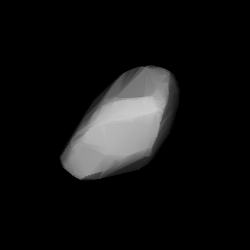
1339 Désagneauxa, provisional designation 1934 XB, is a stony Eoan asteroid from the outer region of the asteroid belt, approximately 24 kilometers in diameter. It was discovered on 4 December 1934, by French astronomer Louis Boyer at the North African Algiers Observatory in Algeria. A few nights later, the asteroid was independently discovered by astronomers Grigory Neujmin and Eugène Delporte, at the Crimean Simeiz and Belgian Uccle Observatory, respectively. It was later named after discoverer's brother-in-law.

1407 Lindelöf, provisional designation 1936 WC, is an asteroid from the central region of the asteroid belt, approximately 20 kilometers in diameter. It was discovered on 21 November 1936, by Finnish astronomer Yrjö Väisälä at Turku Observatory in Southwest Finland. The asteroid was named after Finnish topologist Ernst Lindelöf.
